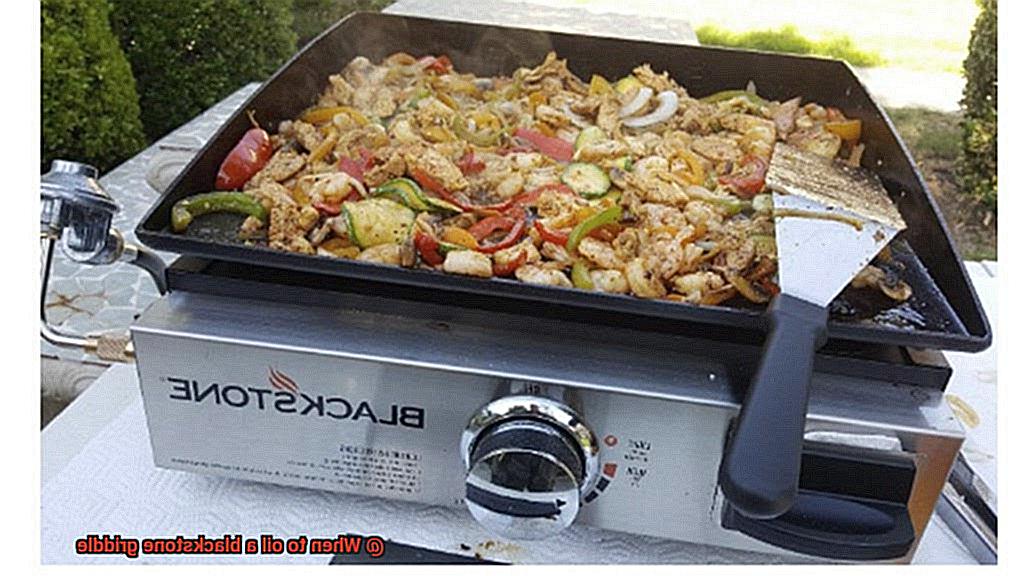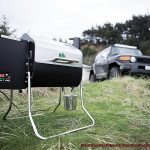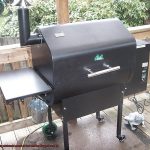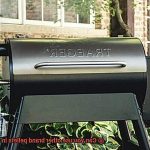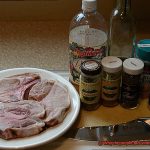Are you a grill master, always on the hunt for the perfect cookout? Or maybe you’re just an occasional griller who likes to fire up the ol’ Blackstone griddle on weekends? Regardless of your level of expertise, cooking on a griddle is an experience like no other. The sizzle, the sear, and the smells all come together to create a tantalizing culinary adventure. However, just like any cooking implement, your griddle needs proper maintenance to perform at its best. That’s why it’s essential to know when to oil a Blackstone griddle.
When it comes to griddle cooking, a well-oiled surface is key. It helps prevent sticking and ensures even cooking. But how do you know when it’s time to oil your griddle? And how often should you do it? With conflicting information and confusing instructions out there, it’s easy to get overwhelmed. But fear not. In this blog post, we’ll set the record straight on when to oil your Blackstone griddle.
From the initial seasoning process to regular maintenance, we’ve got you covered. Our tips and tricks will help you get the most out of your griddle so that every meal is as delicious as possible. So pull up a chair, grab a cold drink, and let’s dive into the world of Blackstone griddles.
Contents
What is a Blackstone Griddle?

The Blackstone Griddle is made of high-quality steel and heated by propane or natural gas, allowing for even heat distribution and consistent cooking results.
The Blackstone Griddle is perfect for outdoor cooking, whether you’re on a camping trip or hosting a backyard barbecue. Its versatility allows you to cook up a variety of foods, from breakfast pancakes to lunch burgers and dinner grilled cheese sandwiches. Plus, it comes in a range of sizes to fit your needs – from small and portable to larger models for home use.
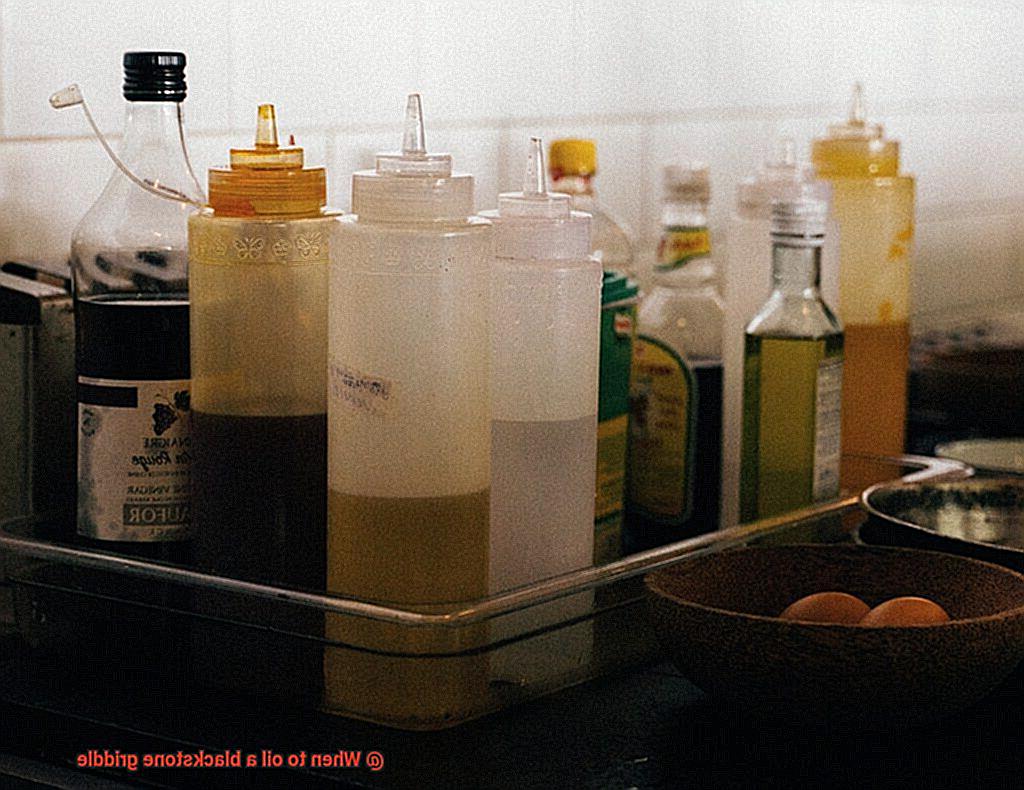
Not only is the Blackstone Griddle versatile, but it’s also durable enough to withstand harsh outdoor conditions. Cleaning is a breeze with just a scraper and some hot water.
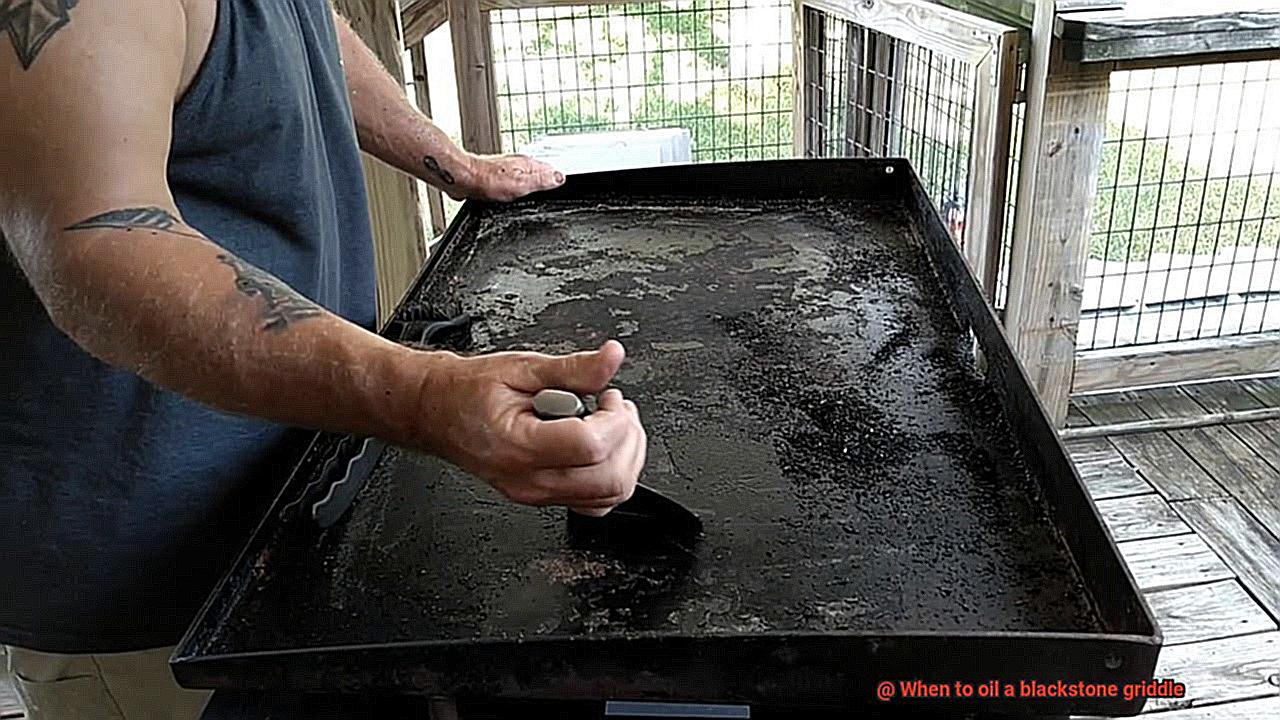
When using your Blackstone Griddle, it’s important to keep it properly oiled before each use. Use an oil with a high smoke point and let it heat up before adding your food.
Why is Oiling the Griddle Essential?
Whether you’re an experienced chef or a newbie, you know that having the right equipment is essential to creating the perfect meal. And when it comes to griddles, nothing beats the Blackstone Griddle. It’s versatile, durable, and can handle anything from breakfast pancakes to dinner grilled cheese sandwiches. But, to get the most out of your griddle, there’s one critical step you shouldn’t ignore – oiling the griddle before every use.
Why is oiling the griddle essential? Here are three important reasons:
Firstly, oiling the griddle helps prevent food from sticking to its surface. No one wants their delicate fish or veggies falling apart on the griddle. By applying a thin layer of oil before cooking, you create a non-stick surface that allows your food to cook evenly without sticking.
Secondly, oiling the griddle helps maintain its condition and prevent rusting. The Blackstone griddle is made from high-quality materials designed to withstand high temperatures and frequent use. However, exposure to moisture and heat can cause the griddle surface to corrode and rust over time. Regularly oiling the surface of your griddle creates a protective barrier that helps prevent rust and keep it in good condition.
Thirdly, oiling the griddle enhances the flavor of your food. Yes, you read that right. Cooking on a well-oiled griddle infuses your food with added depth of flavor and richness. This is especially true when using flavorful oils such as olive or sesame oil.
When Should You Oil Your Blackstone Griddle?
Then, you know that keeping its cooking surface in excellent condition is crucial to preparing mouth-watering meals. But when should you oil your Blackstone griddle? Let me guide you through the process as a seasoned expert.
Firstly, seasoning your griddle with a thin layer of oil before using it for the first time is essential. This step not only creates a non-stick surface but also prevents rusting. Now, you’re ready to cook.
After each use, make sure to clean the griddle thoroughly and apply a thin layer of oil. This small step will prevent food from sticking to the surface and keep it in good condition until the next use. Trust me; it doesn’t take much time, but it can save you so much hassle in the long run.
But what if you haven’t used your Blackstone griddle for an extended period? In such cases, ensure you oil the surface before storing it away. Storing your griddle outdoors or in a humid environment can lead to rust formation on the surface. Applying a thin layer of oil before storing it away will prevent this from happening.
In summary, oiling your Blackstone griddle is vital for maintaining its cooking surface, preventing rusting, and ensuring that your food doesn’t stick to it. Remember to oil before and after each use and before storing it away for an extended period. By following these simple steps, you can enjoy delicious meals cooked on your Blackstone griddle for years to come.
Factors to Consider when Oiling a Blackstone Griddle
If you want to keep your Blackstone griddle in top condition, oiling is a crucial maintenance task that should be done regularly. But what exactly should you consider when oiling your griddle? Let’s explore some factors to ensure your meals turn out perfectly every time.
First things first, the type of oil you use matters. To avoid any unpleasant burnt taste on your food, make sure to use a high smoke point oil such as canola or vegetable oil. This will prevent the oil from burning and leaving a bitter taste on your delicious meals.
Next up, frequency is key. If you’re an avid griddle user (and who isn’t?), make sure to oil your griddle after every use. This will help prevent any food from sticking and maintain its non-stick surface for years to come.
But don’t just grab the oil and start slathering it on your hot griddle. Always make sure your griddle is at room temperature before applying any oil. This will prevent any burning or smoking that could ruin the taste of your food and potentially be dangerous.
Another factor to consider is the temperature of your griddle. You should only oil your griddle when it’s at room temperature. If you try to oil a hot griddle, the oil will burn and smoke, which can be dangerous and ruin the taste of your food.
If you notice any signs of rust or discoloration on your griddle or if your food starts to stick, it’s definitely time for an oiling session. But how do you know if it’s seasoned properly? You can perform a quick water test by sprinkling a few drops of water on the surface. If the water sizzles and evaporates immediately, you’re good to go. If not, it’s time to break out the oil.
Steps to Oil a Blackstone Griddle
Then it’s time to master the essential step of oiling. Not only does it ensure that your food won’t stick, but it also maintains the griddle’s top condition. Here are the steps to oil a Blackstone griddle like a pro:
Step 1: Preheat for Perfect Results
Before applying oil, preheat your griddle by turning the heat on high for 10-15 minutes. This prepares the surface by removing any moisture or debris.
Step 2: Apply Oil of Your Choice
Choose your preferred oil, whether it’s vegetable, canola, or coconut oil. Pour a small amount onto the surface and spread it evenly with a paper towel or brush.
Step 3: Let It Smoke for a Non-Stick Surface
Let the oil smoke for at least five minutes. This creates a non-stick surface that’s perfect for cooking. Once you see smoke coming from the griddle, turn off the heat and let it cool down completely.
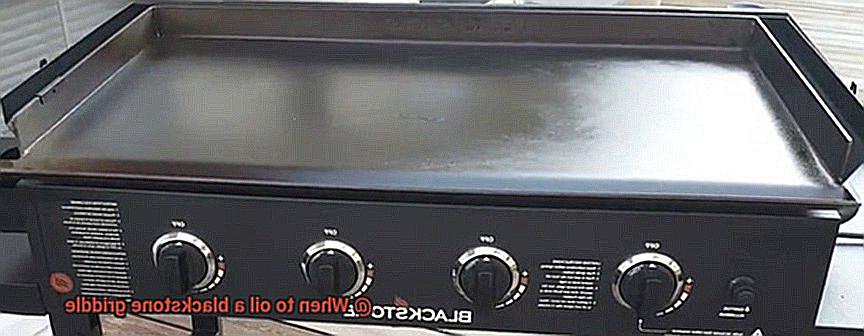
Step 4: Reapply for Maximum Coverage
Once cool, reapply another layer of oil to ensure maximum coverage. Repeat this process several times until you get a perfect non-stick surface.
When Should You Oil Your Blackstone Griddle?
To keep your Blackstone griddle in top condition, oil it regularly. If you use it daily, then oil it every time before cooking. If you use it less often, then once a week will suffice.
Different Types of Oils to Use for a Blackstone Griddle
When it comes to cooking on a Blackstone griddle, using the right oil can make all the difference in achieving the perfect sear and flavor. In this article, we will delve into five different types of oils that work well on a Blackstone griddle, along with their unique benefits.
Vegetable Oil
One of the most widely used oils for cooking on a Blackstone griddle is vegetable oil. This oil has a neutral flavor and a high smoke point, which means it won’t smoke or burn even at high temperatures. It’s also relatively inexpensive and easy to find at most grocery stores. Vegetable oil is a popular choice for those who want their food to have a consistent taste without any added flavor from the oil.
Canola Oil
Canola oil is another popular option for cooking on a Blackstone griddle. It has a slightly higher smoke point than vegetable oil and is low in saturated fats, making it a healthier option. Canola oil has a neutral flavor that won’t affect the taste of your food and is an excellent choice for those who want to cook their food with less fat.
Olive Oil
Olive oil is known for its heart-healthy properties, being rich in monounsaturated fats and antioxidants. However, it has a lower smoke point than vegetable or canola oil, so it’s best used for low to medium heat cooking. Olive oil adds a distinct taste to your dishes and pairs well with many foods, making it an excellent choice for those who want to add some depth to their dishes.
Sesame Oil
If you’re looking to add some flavor to your dishes, sesame oil is an excellent option. This oil has a nutty, slightly sweet flavor that can add an extra dimension to your food. Sesame oil also has a high smoke point, making it suitable for stir-frying and grilling. It’s also rich in healthy fats and antioxidants, making it a great choice for those who want to cook with more nutritious oils.
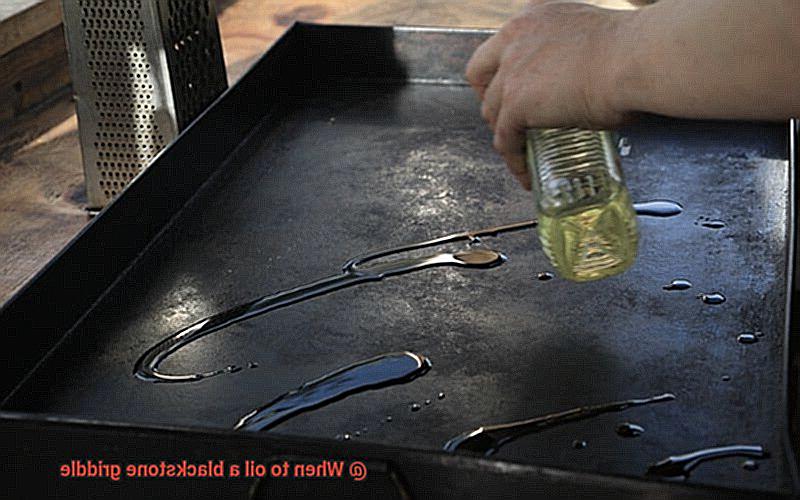
Grapeseed Oil
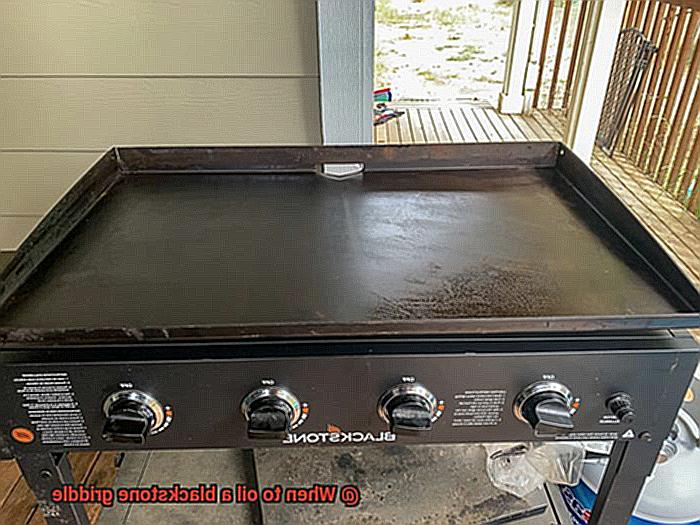
Specifically designed for grilling, grapeseed oil has a high smoke point, mild flavor, and can withstand high heat without burning. It’s also rich in Vitamin E, making it an excellent choice for those who want to add more nutrients to their meals. Grapeseed oil is a versatile option that can be used for a variety of dishes without affecting the taste of the food.
Tips for Cooking on a Blackstone Griddle
If you’re looking to cook up a storm on your Blackstone griddle, there are a few essential tips and tricks that you should know. From preheating the griddle to using the right tools, these tips will help ensure that your food turns out perfectly every time.
Preheat the Griddle
One of the most important tips for cooking on a Blackstone griddle is to preheat it properly. This allows the surface to heat evenly, which helps prevent hot spots and ensures that your food cooks evenly. Preheating should take about 10-15 minutes, depending on the size of your griddle and the temperature you’re cooking at.
Oil the Griddle
To create a non-stick surface and prevent food from sticking to the griddle, it’s important to oil your Blackstone griddle before each use. Use a high-quality oil with a high smoke point, such as vegetable or canola oil, and spread it evenly across the surface with a paper towel or cloth. Avoid using too much oil as this can cause flare-ups and smoke.
Use High-Quality Oil
When oiling your Blackstone griddle, make sure to use high-quality oil that won’t burn or smoke. This will help ensure that your food tastes great and isn’t affected by any unwanted flavors. High-quality oils with a high smoke point include avocado oil, grapeseed oil, and peanut oil.
Use the Right Tools
Using the right tools is crucial when cooking on a Blackstone griddle. Stainless steel or wooden utensils are ideal for cooking on a blackstone griddle as they won’t scratch or damage the surface. Avoid using metal utensils as they can damage the non-stick surface and affect the quality of your food.
Keep it Clean
After each use, make sure to clean your Blackstone griddle thoroughly. Use a scraper or spatula to remove any food debris, and then wipe the surface with a damp cloth. Avoid using soap or abrasive cleaners as they can damage the surface. Keeping your griddle clean will help ensure that it lasts for many years to come.
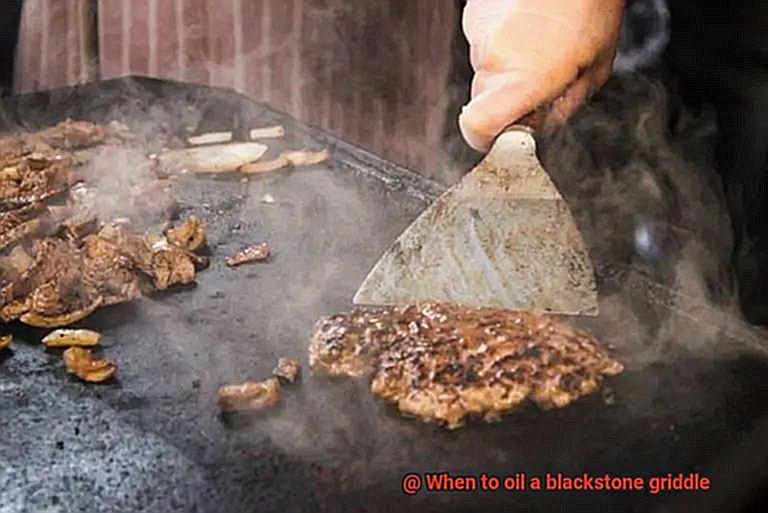
Cleaning and Maintaining your Blackstone Griddle
To ensure your griddle stays in top condition and lasts for years to come, it’s essential to learn how to clean and maintain it.
First and foremost, let’s discuss cleaning. After each use, scrape off any food debris from the surface with a scraper or spatula. This step is vital because if left unattended, debris can build up on the surface, making it harder to clean later on. Once you’ve removed the debris, wipe down the surface with a cloth or paper towel using water and mild soap. Rinse off any soap residue and dry the surface thoroughly.
Now, let’s move on to oiling your griddle. It’s recommended to oil your griddle after every use or at least once a week if you’re not using it frequently. Oiling protects against rust and keeps the surface non-stick. Flaxseed oil is the best oil to use as it has a high smoke point and creates a durable coating on the surface. To apply the oil, pour a small amount onto the griddle surface and spread evenly with a cloth or paper towel. Let it sit for about an hour before wiping off any excess oil with a clean cloth.
Avoid over-oiling your griddle as this can lead to a buildup that makes the surface sticky. Also, steer clear of olive oil or butter as they have low smoke points and can create sticky residues on the surface. Stick to using flaxseed oil for optimal results.
To summarize:
- Clean your Blackstone griddle after each use by scraping off food debris and wiping down with mild soap and water.
- Oil your griddle regularly with flaxseed oil to prevent rust and keep the surface non-stick.
- Avoid over-oiling and using low smoke point oils like olive oil or butter.
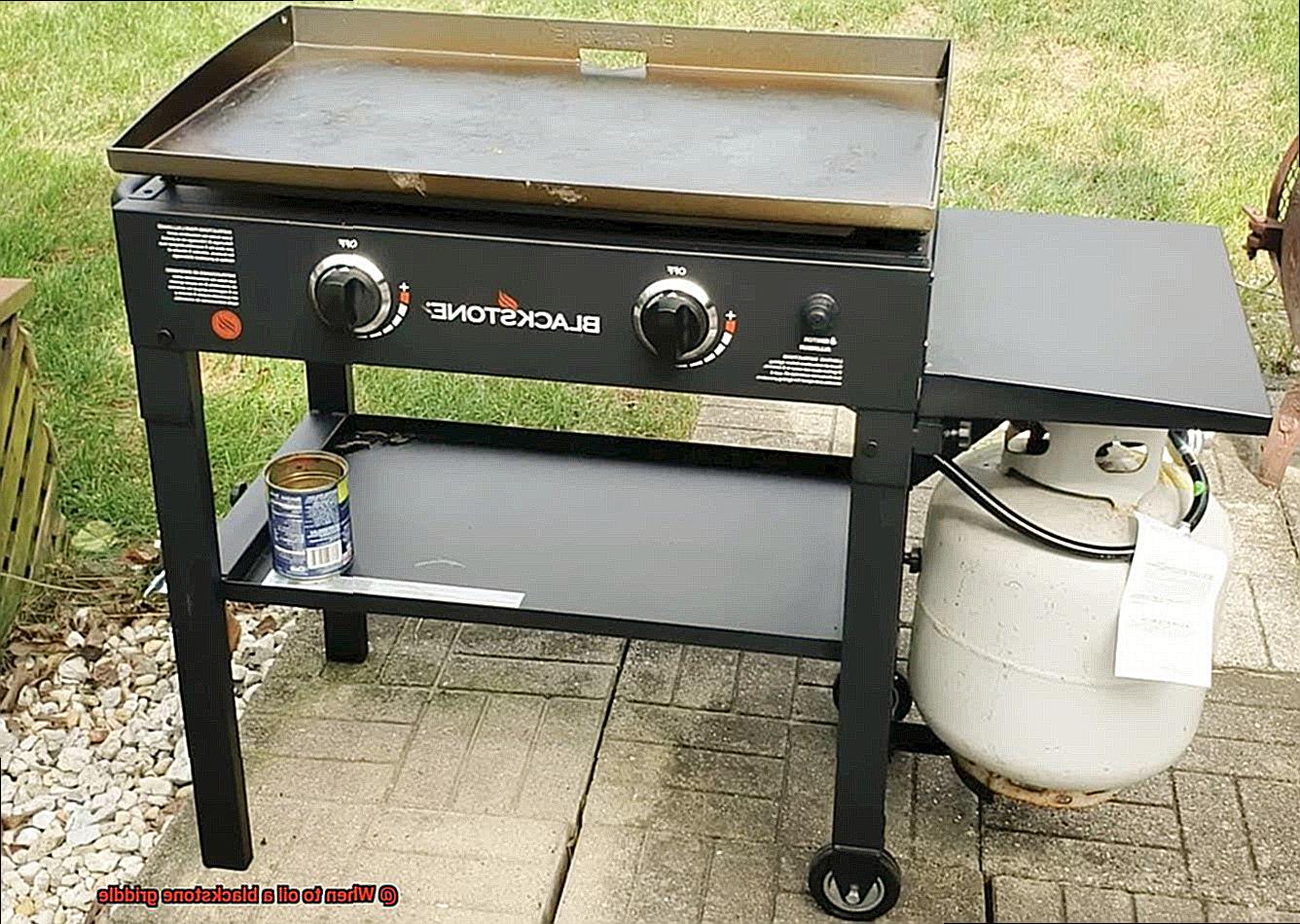
RD1jpSXy3C0″ >
Also Read: How to Season The Bottom Of Blackstone Griddles?
Conclusion
In conclusion, a well-oiled Blackstone griddle is the key to unlocking the perfect cookout experience. The benefits of oiling your griddle before each use are numerous. Not only does it prevent food from sticking and ensure even cooking, but it also helps maintain the condition of your griddle and prevents rusting.
To achieve optimal results, it’s important to oil your Blackstone griddle at the right time and with high-quality oils that have high smoke points like vegetable or canola oil. Additionally, consider factors such as frequency, temperature, and signs of rust or discoloration when oiling your griddle.
Proper preheating, using the right tools like stainless steel or wooden utensils, and keeping it clean after each use are all essential steps in maintaining your Blackstone griddle. By following these tips and tricks, you can enjoy mouth-watering meals cooked on your griddle for years to come.
So what are you waiting for? Fire up that grill and let the sizzle, sear, and smells create a tantalizing culinary adventure.

